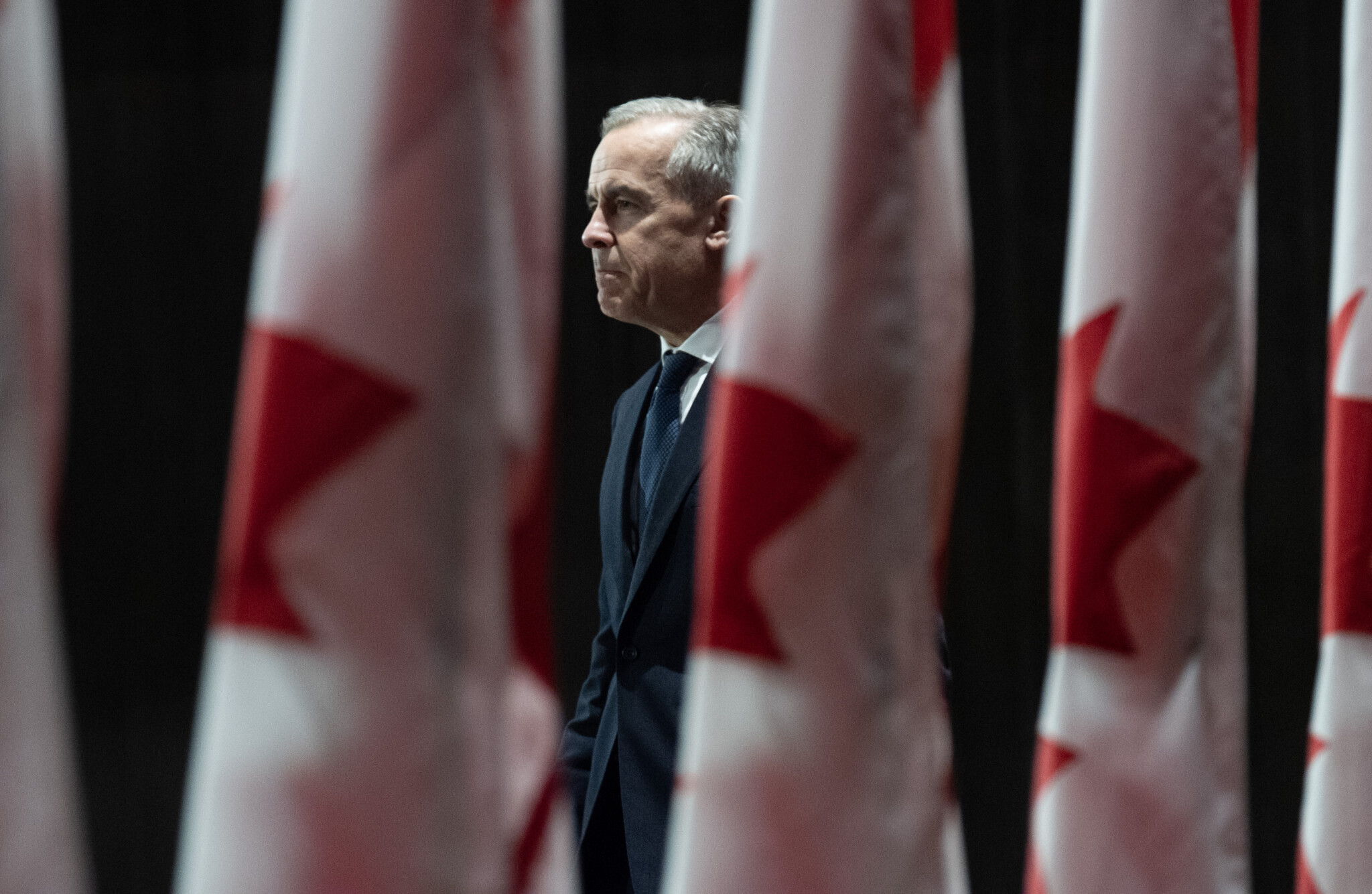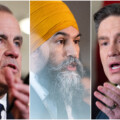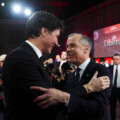Welcome to Need to Know, The Hub’s roundup of experts and insiders providing insights into the federal election stories, policy announcements, and campaign developments Canadians need to be keeping an eye on.
Can somebody please care about Canadian growth?
By William B.P. Robson, president and CEO, and Don Drummond, a fellow-in-residence at the C.D. Howe Institute
The federal election call has predictably triggered promises of tax cuts and handouts. These promises are a bait-and-switch. It could be a quick reverse—shortly after the election, the winner announces that a look at the books has revealed worse-than-expected numbers and forced a change in plans. Or, worse, the switch could be bigger and take longer—the new government finances the tax cuts and handouts with even bigger deficits that slow economic growth, squeeze programs, and push taxes up for years to come.
Canadians should demand that election promises be consistent with Canada’s economic and fiscal realities. The federal government already has a high debt burden, and things will get worse with President Trump’s tariff attack. Strategy must be aimed at bolstering Canada’s growth prospects within sustainable finances.
With annual costs from $5 billion to well over $10 billion, the personal income tax cuts promises of the Liberals, Conservatives, and NDP are particularly egregious uses of public funds for little economic benefit. All the proposals cut the marginal income tax rate, the driver of incentives to work, save, and benefit, for only a portion of taxpayers, and where the rate is already low. For everyone else, the relief is too much like the pre-election bribes that seem to be in style nowadays. And beneficiaries may rightly worry that debt-funded tax relief will not last.
Canadians should ask three questions about all election promises. Do they support work and investment? Do they make us more resilient against Trump’s aggression? And, critically, are they fiscally sustainable? We need to see how the parties’ plans add up—or not. Otherwise, the promises are bait, and a switch—fast and cynical or slow and painful—will follow.
Conservative social media spending continues to surge while the Liberals are striving to catch up
By Cole Hogan, a conservative strategist
From March 22 to March 28, the first full week of the campaign, Pierre Poilievre’s Conservatives spent $698,000 on Meta platforms. In my last report, I noted that the previous Conservative $563,000 weekly ad spend was the largest amount I’ve recorded since I began reporting on federal party ad spends last summer. The March 22 to March 28 spend for the Conservatives surpassed that record, representing an increase of $135,000 from the previous week, March 16 to March 22, before the election was called.
This is the second week the Conservatives have spent over $550,000 a week on Meta platforms. The most viewed Conservative advertisement is currently an ad featuring a Pierre Poilievre lawn sign and asks users if they’d like to order their lawn sign.
Mark Carney’s Liberals spent $682,000 on Meta platforms from March 22 to March 28, almost matching the Conservative ad spend of $698,000. This number represents a weekly ad spend increase of $432,000 from the previous week, March 16 to March 22, when Liberals spent $250,000. This is a significant increase in ad spend, and indicates the Liberals are catching up to the Conservatives online.
The Liberals’ $682,000 weekly ad spend from March 22 to March 28 is the second time in 2025 (since last week) that the Liberals have spent more than $100,000 in one week. This high weekly ad spend will likely continue throughout the election for both the Liberals and the Conservatives. The most viewed Liberal advertisement is currently one introducing Mark Carney, highlighting his experience as governor of the Bank of Canada and Bank of England.

Federal Conservative Leader Pierre Poilievre is joined by his wife Anaida Poilievre and children Cruz and Valentina, as he talks with employees at Kruger Packaging during a federal election campaign event in Brampton, Ont., on Monday, March 24, 2025. Chris Young/The Canadian Press.
Jagmeet Singh’s NDP continues to be a non-factor in the digital air war, only having spent $13,000 between March 22 and March 28, an increase of $7,000 from the week previous. The NDP has spent $2,000 a week since January 2025. The NDP’s ad creative continues to be generic in design, mainly focusing on health care. Last week, there were no ads featuring the NDP leader. There is now one ad featuring Jagmeet Singh.
The spectre of U.S. President Donald Trump and his tariffs has made this election a race between the Liberals and the Conservatives. The competitive ad spend between the Liberals and the Conservatives reflects their current polling positions, as well as the non-competitive position of the NDP.
B.C. is being painted red
By Kirk LaPointe, The Hub’s B.C. correspondent
If you were to use the Wayback Machine to view last autumn’s polls, only one Liberal seat among the 15 it won in B.C. in 2021 remained safe for the coming federal election. Even if Justin Trudeau was a bit of a homeboy the locals might root for, life had turned so sour for him here that few blanched when a woman told him to “get the hell out of the province” while skiing on holidays.
Well, today, a Liberal candidacy is a hot job to secure, thanks in part to Trudeau’s getting the hell out of the House of Commons, but mainly due to two of his rivals at opposite ends of the political spectrum. The arrival of Donald Trump has scared and enraged the bejeezus out of British Columbians, in particular the substantial base that had historically supported Jagmeet Singh’s federal NDP. The big beneficiary is Mark Carney, whose party has advanced to a small lead in the province. As in Ontario and Manitoba, the popularity of the provincial parties is not carrying over to the federal brands.
Pierre Poilievre’s Conservatives wouldn’t be displeased typically by their poll position in B.C., but the swing of NDP voters into the Liberal camp is swinging several seats with it at their expense. There is also a significant gender gap—women who had supported Trudeau until recently have decided Poilievre isn’t their choice as a replacement, so the Liberals have a gender edge of about a dozen points. The NDP vote, meanwhile, has gone from about 20 percent to single digits; Singh is himself fighting for his seat in a redistributed riding in his adopted political home of Burnaby, where in 2021 he would have handily won.
Three weeks remain for Singh to shore up, Poilievre to rebrand, and Carney not to move a muscle he needn’t.
Scaling to nowhere
By Alex MacDonald, associate vice president, federal advocacy at Counsel Public Affairs
Mark Carney’s housing plan was self-styled as “Canada’s most ambitious housing plan since the Second World War.” What’s truly notable about the plan is not its ambition but its cost. Carney is proposing to furnish a new federal entity—Build Canada Homes—with $36 billion in financing programs, on top of reintroducing the Multiple Unit Rental Building (MURB) tax incentive and eliminating of the GST for first-time homebuyers on homes at or under $1 million, which will cost the Treasury billions more in foregone tax revenues.
The plan is that $26 billion of Build Canada Homes financing will be directed toward debt and equity financing of “innovative Canadian prefabricated home builders.” While off-site homebuilding technologies like pre-fabrication and modular can reduce construction timelines and carbon emissions, this represents a massive bet on what can only be categorized as a nascent industry in Canada. For decades, prefabricated and modular homes have accounted for 1 percent of Canadian dwellings, with no signs of increasing demand.
But Build Canada Homes won’t just be financing these manufacturers, it will also “issue bulk orders of units from manufacturers to create sustained demand.” In a short period of time, the federal government would become the largest financer and purchaser of prefabricated and modular housing in the Canadian market.
The proposed plan may solve for a real problem faced by the industry—lack of stable and predictable demand—but it cannot indefinitely make up for a lack of genuine consumer demand. In the absence of a real market for these housing products, this is a plan to scale the prefabricated housing industry to nowhere, and at a great cost to Canadian taxpayers.

Houses are shown in the Kitsilano neighbourhood of Vancouver on Monday, Oct. 3, 2022. Jonathan Hayward/The Canadian Press.
We’ve seen this before. The Carney Liberals are replicating the Trudeau Liberals’ failed EV battery supply chain industrial strategy by massively subsidizing an industrial process to produce a product for which there is lagging consumer demand.
These are large sums being funnelled through ill-thought-out policy tools towards marginal issues of the housing supply crisis. Reducing the overall tax burden of building housing supply of all shapes and sizes would be a much more justifiable use of scarce resources.
The Tory Syndrome makes an early appearance
By Royce Koop, professor of political science at the University of Manitoba
The writs for this election were dropped on March 23rd. Four days later, Conservatives were already turning on one another.
Consultant Kory Teneyke got the ball rolling with an interview (with the CBC, no less) criticizing the Tories’ campaign focus. According to Teneyke, the party needed to engage more with public concern about Trump’s tariffs or risk blowing the campaign.
A day later, the CBC made its second contribution to the genre. The campaign, according to “more than half a dozen Conservatives,” is “a mess” and, worse still, campaign manager Jenni Byrne is too controlling and a big meanie.
Surely this is a new record.
There’s also a term for this: the Tory Syndrome.
Many years ago, political scientist George Perlin came up with the theory to help explain why, in the 20th century, the Liberals were so much more successful than the Tories at winning elections. According to Perlin, power disciplines parties; without it, the Conservatives devolve into infighting.
A vicious cycle then emerges. Losing leads to infighting, infighting makes it harder to win. Give it a few rounds, and whole swaths of Tories have never even been in government, and know how to do little other than fight with one another. The Tory Syndrome.
Perlin’s theory provides a great tool for understanding a puzzle from Canadian political history. But it has implications for right here, right now. Infighting means Tories lose. Being disciplined means they have a chance.
And being disciplined means resisting the Tory Syndrome even when very smart, very experienced people think otherwise.
One last point: campaigns matter. This race will surely tighten up before election day. But only if Conservatives don’t spend the next four weeks throwing dinner rolls at each other.
Don’t let the election distract from what the CRTC is up to
By Mark Musselman, a former entertainment lawyer and a current PhD student. You can find his writings at markmusselman2.substack.com.
On March 24th, the CRTC announced it had postponed its hearings on the implementation of the modernized Broadcasting Act, citing the federal election call as the reason. While the delay is ultimately a welcome development, it stems from a procedural consideration—not the more pressing substantive one. The hearings—particularly those focused on redefining “Canadian Content” (CanCon)—are proceeding on a flawed foundation. The CRTC and industry stakeholders are preoccupied with fine-tuning the definition of CanCon, a designation that unlocks significant public funding and regulatory advantages. Yet few are pausing to ask the deeper, more essential question: does the CanCon regime actually fulfill its core purpose of fostering a meaningful and cohesive Canadian national identity?
With the passage of the Online Streaming Act, foreign platforms like Netflix, Disney, and Apple have been brought into the regulatory fold—significantly raising the financial stakes. As a result, industry players are jockeying for position.
The Canadian Media Producers Association wants more money and more regulatory protection for its members, including mandated terms of trade to provide the commercial leverage that Canadian producers cannot secure in the open market. Domestic broadcasters—Bell, Rogers, Corus—seek rules that cement their dominance and grant automatic certification to any production produced or commissioned by a Canadian broadcaster.
Quebecor insists simply that foreign streamers be denied CanCon certification as a general rule. Netflix, Disney, Apple, Paramount, and Amazon argue against financial and regulatory burdens and in favour of flexibility around how they produce CanCon. ACTRA, the performers’ union, wants funding for a Canadian “star system” (seriously!) and to block non-union productions. Finally, the Indigenous Screen Office, the Black Film Office, the Disability Screen Office, the Racial Equity Screen Office, and the Deaf and Hard of Hearing Coalition are all demanding segregated funding for their respective constituencies. The list goes on and on.
The entire process represents a self-serving exercise driven by industry insiders hell-bent on protecting their own interests. The real question isn’t how to redefine CanCon—it’s whether the system works at all. If the Canadian content regime cannot be shown to demonstrably benefit the nation, then there are bigger problems than any narrow definitional change can fix.
And larger problems potentially loom: the Trump administration listed the Online Streaming Act, Canada’s digital services tax, and even Quebec’s language laws in its list of trade grievances earlier this week. How far is Canada really willing to go to protect its current content regime when the costs of doing so could be growing by the day?










